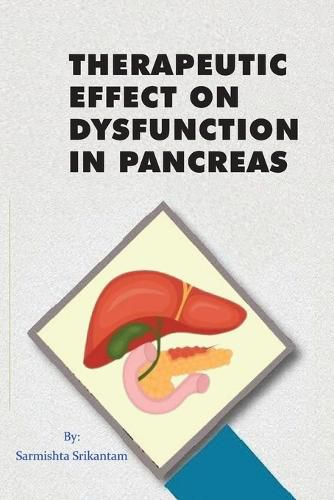Readings Newsletter
Become a Readings Member to make your shopping experience even easier.
Sign in or sign up for free!
You’re not far away from qualifying for FREE standard shipping within Australia
You’ve qualified for FREE standard shipping within Australia
The cart is loading…






This title is printed to order. This book may have been self-published. If so, we cannot guarantee the quality of the content. In the main most books will have gone through the editing process however some may not. We therefore suggest that you be aware of this before ordering this book. If in doubt check either the author or publisher’s details as we are unable to accept any returns unless they are faulty. Please contact us if you have any questions.
Pancreas is a long and slender glandular organ located behind the stomach, in the retroperitoneal space. The recorded average weight of adult human pancreas is about 100 g and is approximately 14-25cm in length. Pancreas is a heterocrine gland, and it holds both exocrine and endocrine tissue along with pancreatic ductal cells. Exocrine pancreas is structurally similar to salivary glands and has acinar cells with many zymogen granules, which constitute nearly 85% of the pancreas. These zymogen granules contain precursors of the pancreatic enzymes responsible for the digestion of major dietary components. The pancreatic peptidases trypsin, chymotrypsin, and carboxypeptidase A and B and lipases hydrolyse dietary proteins and triglycerides respectively. All these secretions were controlled by neural and hormonal mechanisms. When food reaches the duodenum, enteroendocrine cells release the hormones secretin and cholecystokinin into the bloodstream. These hormones stimulate the pancreas to produce large amounts of water, bicarbonate; digestive enzymes amylase and lipase; zymogens trypsinogen, chymotrypsinogen, proelastase and procarboxypeptidase.
$9.00 standard shipping within Australia
FREE standard shipping within Australia for orders over $100.00
Express & International shipping calculated at checkout
This title is printed to order. This book may have been self-published. If so, we cannot guarantee the quality of the content. In the main most books will have gone through the editing process however some may not. We therefore suggest that you be aware of this before ordering this book. If in doubt check either the author or publisher’s details as we are unable to accept any returns unless they are faulty. Please contact us if you have any questions.
Pancreas is a long and slender glandular organ located behind the stomach, in the retroperitoneal space. The recorded average weight of adult human pancreas is about 100 g and is approximately 14-25cm in length. Pancreas is a heterocrine gland, and it holds both exocrine and endocrine tissue along with pancreatic ductal cells. Exocrine pancreas is structurally similar to salivary glands and has acinar cells with many zymogen granules, which constitute nearly 85% of the pancreas. These zymogen granules contain precursors of the pancreatic enzymes responsible for the digestion of major dietary components. The pancreatic peptidases trypsin, chymotrypsin, and carboxypeptidase A and B and lipases hydrolyse dietary proteins and triglycerides respectively. All these secretions were controlled by neural and hormonal mechanisms. When food reaches the duodenum, enteroendocrine cells release the hormones secretin and cholecystokinin into the bloodstream. These hormones stimulate the pancreas to produce large amounts of water, bicarbonate; digestive enzymes amylase and lipase; zymogens trypsinogen, chymotrypsinogen, proelastase and procarboxypeptidase.